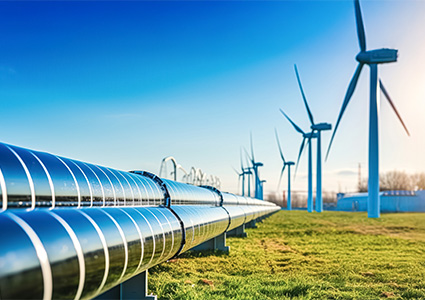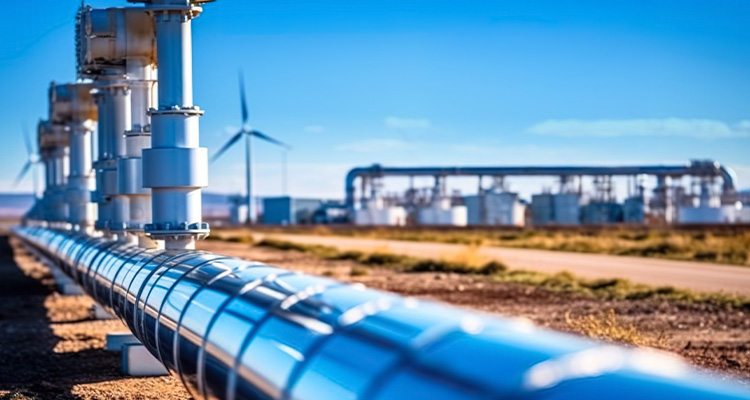The pressure to build smarter, faster, and cleaner
By Tim Bell
The pipeline industry is at a crossroads. Faced with aging infrastructure, growing energy demand, tight project margins, and a pressing need to reduce environmental impact, the sector is being forced to evolve at a faster pace than ever before.
Whether we’re talking about natural gas, hydrogen, CO₂ pipelines for carbon capture, or the digital transformation of existing systems, the expectations have shifted and they’re not going back.
As someone who’s worked in this space for quite some time, I’ve never seen a moment quite like this. We’re navigating a perfect storm of pressures and opportunities. And the companies that rise to the occasion won’t be the ones that build the most, but the ones that build the best with precision, foresight, and flexibility.
A market under pressure
Right now, the pipeline sector is feeling pressure from almost every angle:
- Public and private energy demand is climbing as cities grow, grids modernize, and the energy mix diversifies
- Regulations are getting stricter – not just around safety, but also environmental standards and land use
- Costs are climbing due to inflation, supply chain constraints, and a shrinking pool of skilled labor
Meanwhile, the margin for error keeps getting smaller. One misstep in permitting, routing, or community engagement can stall a project indefinitely.
The result? Project owners are demanding more from every partner, every contractor, and every phase of the job. It’s now about doing it faster, smarter, and with fewer disruptions.
Efficiency is the new currency
In today’s climate, efficiency isn’t just about saving money. It’s about winning permits. Earning trust. Meeting deadlines. Protecting the environment.
From my vantage point, the most successful projects are those that treat efficiency as a mindset, not just a metric. That means:
- Planning routes with community and regulatory realities in mind from the outset
- Using modular and prefabricated solutions where possible
- Embracing lean construction and integrated scheduling to reduce downtime
- Digitally tracking materials, labor, and equipment to avoid surprises
We’ve entered an era where every day shaved off a project timeline, and every risk reduced before it materializes, has real consequences for the bottom line and for long-term reputation.

The tech transformation is here but still uneven
There’s a lot of buzz in the industry right now about new technology, and with good reason.
Digital twins, real-time monitoring sensors, AI, autonomous inspection devices, pipeline monitoring software, and trenchless technologies are all changing how we build and maintain pipelines.
But while the technology exists, adoption is still uneven. Many organizations are cautious, constrained by legacy systems, or hesitant to invest up front. But this hesitation can be costly.
We’ve seen firsthand how the right tools can deliver better risk modeling, tighter control over quality, and more transparent stakeholder communication. Tech doesn’t replace experience, but it enhances it. And at a time when talent is scarce, it helps teams work safer and smarter.
The companies that embrace this shift, early training their people and integrating new tools, will be better positioned to scale, adapt, and lead.
Trends that will shape the next decade
Looking ahead, there are several big trends reshaping the pipeline landscape:
- Hydrogen and renewable natural gas (RNG): As decarbonization goals accelerate, we’re seeing more momentum behind pipeline retrofits and new lines tailored for low-carbon fuels. The technical and regulatory challenges here are significant but so is the opportunity
- Carbon capture and storage (CCS): CO₂ pipelines are gaining ground as heavy industries look to meet ESG goals. These projects demand different safety and engineering considerations, but the market is moving quickly
- Urban pipeline replacement programs: Many cities are grappling with outdated gas lines. Replacing them requires sensitivity to community impact, traffic flow, and long-term resilience, especially in dense, high-stakes environments
- Workforce development: With an aging labor force and high turnover, the talent crunch is real. Companies that invest in training, mentorship, and digital literacy will have a competitive edge
- Data-driven decision making: From planning to operations, the ability to make smarter choices based on real-time and historical data is fast becoming a baseline requirement
The pipeline evolution means reinvention
The energy transition doesn’t mean the end of pipelines; it means the reinvention of them.
This moment calls for more than just engineering muscle. It calls for systems thinking. It calls for collaboration between regulators, engineers, and communities. A willingness to rethink “how it’s always been done” in favor of what works best for the long term.
Ultimately, pipelines remain a fundamental component of modern infrastructure. But how we plan, build, and operate them must evolve. The pressure is real, but so is the potential.
As an industry, we have the tools, the talent, and the technology. Now, it’s about putting them to work; intelligently, sustainably, and with purpose.

Tim Bell
Tim Bell is General Manager of the Pipeline Division at HYLAN, a leading provider of full-service turnkey communications solutions, electrical infrastructure design and construction services for wireline, wireless, and smart city municipal services across the United States. HYLAN provides an array of comprehensive services, which include communications and electrical infrastructure design, DAS and small cell installations, engineering, construction and maintenance, data center solutions, pipeline services, and more.
